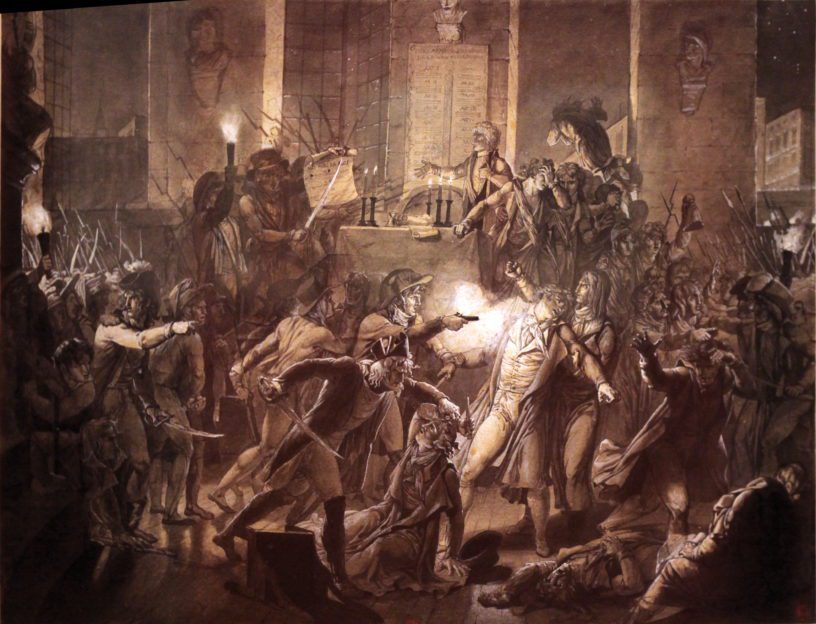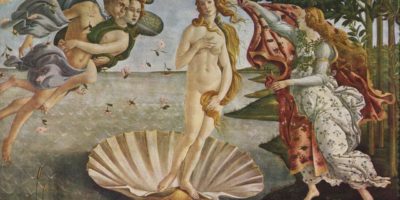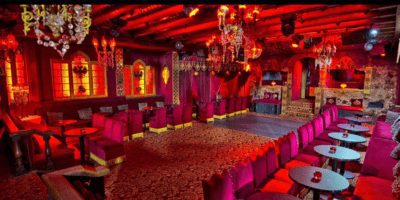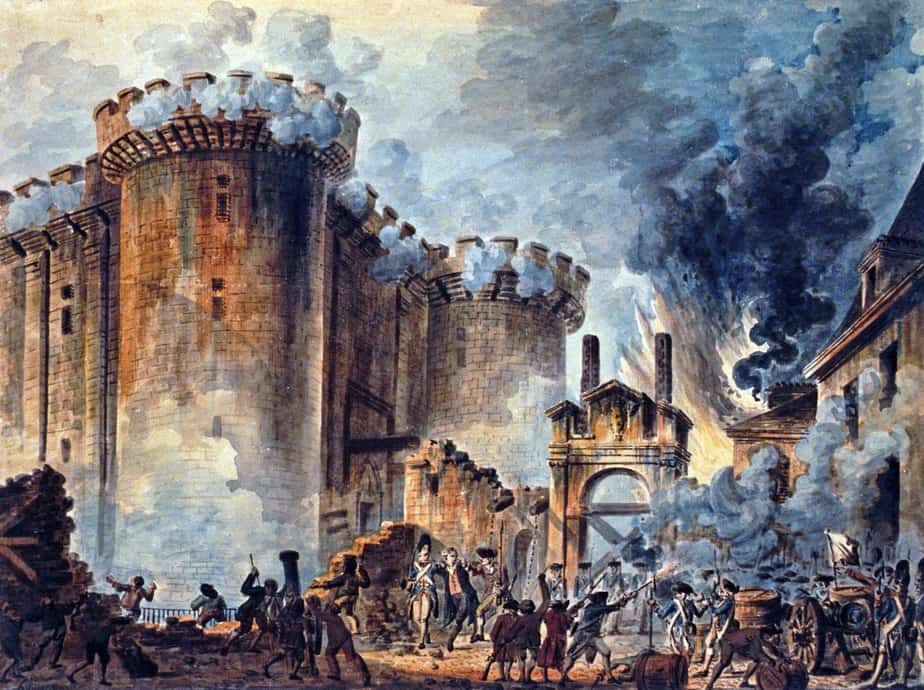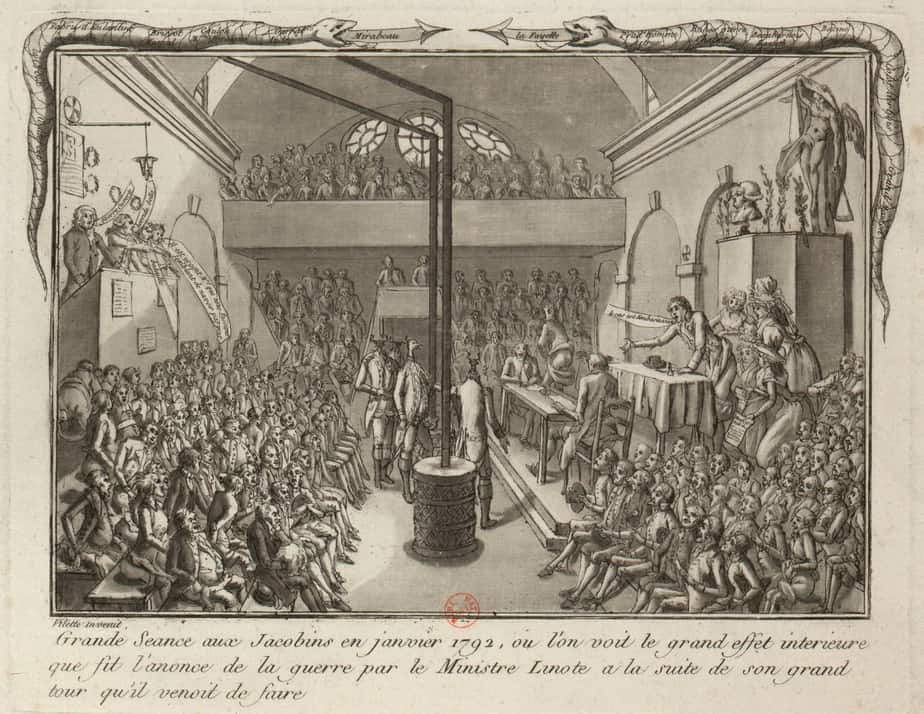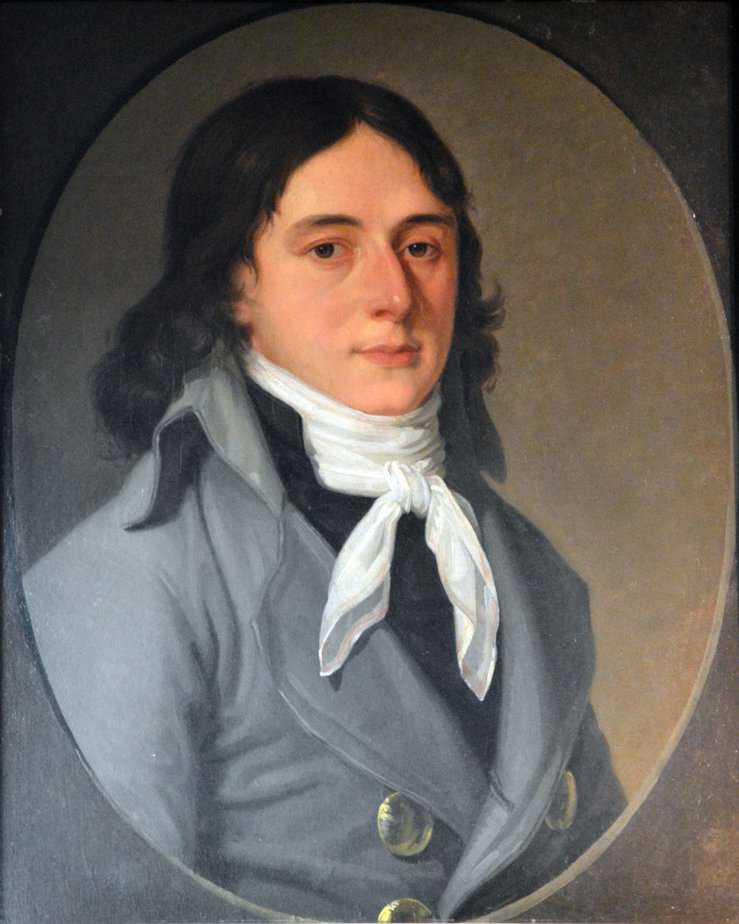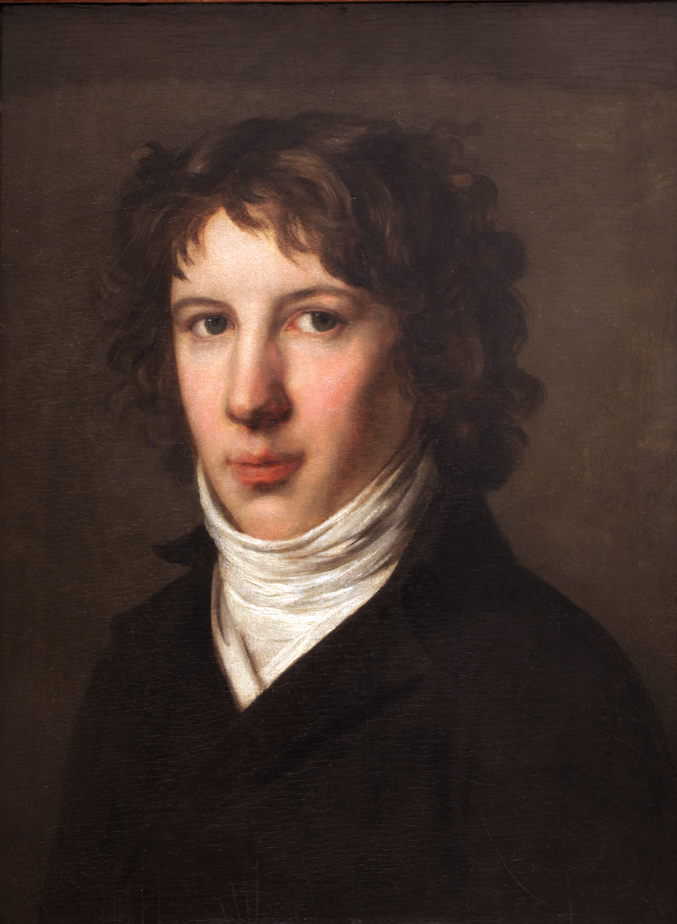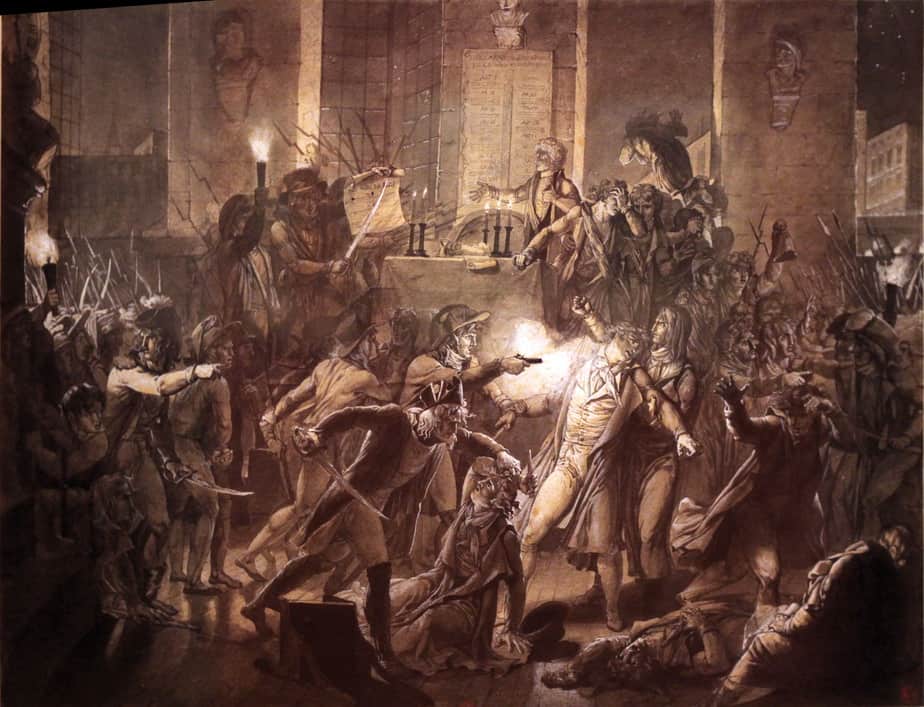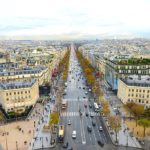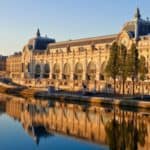5 Surprising Facts about Robespierre
Maximilien Robespierre remains today the most controversial character of French history. For some he is responsible for the Terror, a bloody repression of his political opponents. Some others consider he saved the Republic at a moment of grave danger.
His political record that includes the abolition of slavery, measures to extend democracy and defend the poors is overshadowed by his refusal to accept any opposition.
Read on and you will discover just to what extent Robespierre is a complex and mysterious personality.
Furthermore, his decisions, whichever one you can think of, have to be understood in a very tormented context. The revolutionaries like Robespierre fought for what they thought a decisive progress not only for France but for humanity. They knew they were playing their own head but still stay involved in this hazardous political game.
Here is five interesting facts about Robespierre. I bet they will surprise you!
1. Robespierre did not agree with the death penalty
This one seems very intriguing: Maximilien Robespierre is associated with the massacre of thousands of political opponents. Did he disown his former position? Or did the changes of the circumstances explain what happened?
Maximilien Marie Isidore de Robespierre, born in 1758, started as a lawyer in the city of Arras in the north of France. He wrote lot of essays developing the ideas of the philosopher Jean-Jacques Rousseau.
Robespierre belonged to the intellectual movement of the Enlightenment and shared their ideas to humanize the court. It is because of his progressive ideas that he was elected deputy of the new national assembly in 1789.
In 1791, he made a speech in front of this same assembly to defend the abolition of the death penalty. At this moment, this opinion seemed very advanced.
In fact, France will wait until 1981, 190 years after Robespierre’s speech, to abolish it and to send the guillotine to the museums.
In this speech, Robespierre warned against the risk of judicial error. He also pointed out that it was difficult to present murders as something horrible when the law considers death as a possible punishment. For him, an inmate is defeated, powerless, and a society would be barbaric to kill a man that presents no threat to it.
It seems that Robespierre made a difference to how society treated common criminals, but also violences committed on the political level; ensuing a deadly fight which ended the tyranny of the monarchy and brought about democracy.
He accepted the people’s violence in its battle for liberty, like the storming of the fortress of La Bastille the 14th of July 1789.
When Robespierre was at the height of his influence in 1793 and 1794, the country was in a situation of war against all of its neighbours. Add to this a civil war with the Catholic monarchists and some of the more centrist republicans, and a constant risk of plots in Paris.
Robespierre and many others revolutionaries believed this situation justified a state of exception, a suspension of human rights only for the time needed for the Republic to be saved.
The debate is still open today about whether these measures were necessary in this context…
2. Robespierre was never officially head of state
When the Revolution started in 1789, nobody could have guessed that Robespierre would become so influential only a few years after. He was a brilliant writer but a poor speaker. His voice was weak, high-pitched and his speeches could be incredibly long and boring.
However, he slowly won some influence and respect among his colleagues and among the Parisians. He seemed very convinced and inspired, truth to his ideals. One of the early leaders of the Revolution, Mirabeau, said “he will go far because he believes everything he says”.
When the corruption or the treason of many leaders of the Revolution became public, Robespierre was one of the few to keep the trust of the people. People started calling him “the Incorruptible”.
Robespierre was very active in the national assemblybetween 1789 and 1791: The Constituent Assembly. He proposed and obtained that the deputies of this assembly could not be reelected in the next one: The National Assembly (1791-1792).
He was also the main speaker in the political club of the Jacobins: the most influential club and one of the most radical.
The members of this club, close from a political party, used to discuss and vote about the projects of law and actions to be done. It had a very strong informal influence and to be condemned in this club could put your life in danger.
After the fall of the monarchy on august 1792, a new assembly was elected: The Convention. Robespierre got the highest numbers of vote to elect him as a deputy of Paris. He was one of the most important leaders of the Montagnards, the radicals of this assembly.
On September 1793, he joined the Committee of Public Safety (Comité de Salut Public). This committee was a government which has been given a lot of power to save the Republic.
This committee was in theory under the control of the Convention but the deputies did not dare to displease the powerful members of this committee. Robespierre was the most influential member, supported by two of his colleagues, Couthon and Saint-Just.
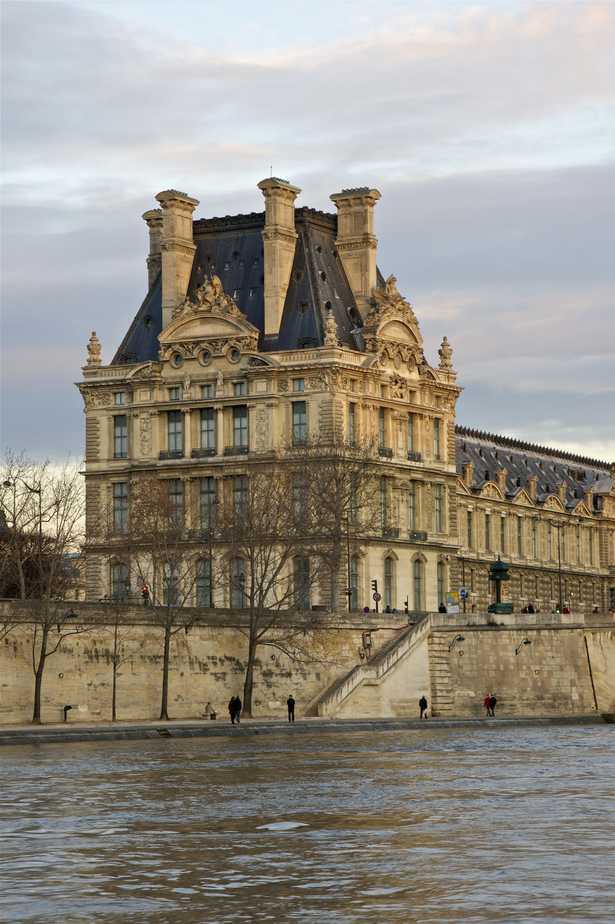
The Pavillon de Flore that housed the Committee (now the southwest extremity of the Louvre). Sourced from Wikipedia
In several steps, the followers of Robespierre prepared the elimination of the centrist of the Convention (the Girondins) then they targeted the extremists of the Paris municipal council (the Hebertistes) and his rival within the Montagnards, Danton.
All these opponents were accused of treason and judged by the Revolutionary Tribunal, under the pressure of Robespierre and his followers. Between Mars and July 1794 Robespierre had no rivals, no declared opponents and could impose his will to a terrified assembly.

Cartoon from the Revolutionary era. Robespierre guillotining the executioner after having guillotined all the French. Sourced from Wikipedia
3. He let his best friend Camille Desmoulins be guillotined
This is one of the most common reproaches made of Robespierre. If some justified his toughness against his enemies, very few people forgive him for letting his friend die.
Robespierre started his political ascension with his friend Camille Desmoulins.
Desmoulins was a lawyer sharing the advanced ideals of Robespierre. They studied together in a very prestigious school and college, which is today the high-school Louis-Le-Grand.
Desmoulins chose Robespierre as his best man when he got married and as the godfather of his son. They were as close as friends can be.
Desmoulins was a very influential and skilled journalist who was read in the whole country. His ideas were similar to those of Robespierre for a long time and he shared some responsibility in the elimination of the Girondins and the death of the king Louis the XVI.
However, in march 1794, along with Danton, the rival of Robespierre within the Montagnards, he asks for the end of the Terror and the overuse of the guillotine. Along with his partner they had the nickname of “Indulgents”.
But Robespierre and his followers believed that it was too soon to abolish this state of exception. Robespierre warned Desmoulins several times and ask him to stop, meanwhile their friendship was disappearing because of this political opposition.
Criticized by the “Indulgents”, the friends of Robespierre replied by accusing Desmoulins and Danton of betraying the Revolution.
Saint-Just, the henchman of Robespierre in the Committee of Public Safety, put them under accusation seemingly without reaction of Robespierre.
Deprived from the support of the only one who could have saved him, a crying Desmoulins was brought to the guillotine, quickly followed by his wife, the 5th of April 1794.
4. Robespierre wanted to start a cult
The revolutionaries had the project to create a new society. Their plans encompassed areas of society that we would consider today as private matter, and not the business of the state. If you hadn’t already guessed it, Robespierre had a plan to change the religion of the French.
Before 1789, France was almost entirely catholic. But in 1791, the project of the deputies to nationalize the French church met a strong opposition from the Pope.
In return, many Catholics and church officials started to disapprove the Revolution. Some revolutionaries considered them as political opponents, which led to persecutions and massacres.
Starting from October 1793, a policy of deChristianization was implemented, mostly by governors in the countryside – crosses and religious images were destroyed, churches were closed and sacked. Even in Paris, an atheist ceremony is organized in Notre-Dame around the cult of Reason.
Despite their opposition to the Catholic church, Robespierre and his followers disapproved these excesses.
They were not atheist but deist: they believed in God. They wanted to target what they called the “fanatism” of some Catholics but they also wanted to preserve freedom of worship. Furthermore, they did not like the initiatives they did not control.
On the 7th of May 1794, Robespierre tackled the issue in a speech in the Assembly. He advocated the organization of the cult of the “Supreme Being”.
He said that society was based on morality, itself guaranteed by a divine sanction. Therefore, the idea of the Supreme Being and the immortality of the soul brings to mind justice and thus was “social and republican”.
The Assembly made a decree to recognize and organize this new cult. It became in a way a new official religion even if freedom of worship was maintained.
On the 8th of June 1794, a huge ceremony was organized in Paris starting in the Tuileries garden to finish at the Champs-de-Mars. Robespierre had been chosen to be the president of the ceremony.
There were parades, songs, flowers garlands, a chariot of liberty and a symbolic mountain that was to be climb. Robespierre burned the statue of Atheism to reveal the statue of Wisdom hidden inside.
This ceremony was the peak of Robespierre’s influence, publicly officializing his position of leadership.
However, it started a movement of opposition to him. Many of his colleagues started to suspect that he wanted a personal dictatorship. The cult of the Supreme Being did not survived the fall of Robespierre and his followers one month later.
5. Robespierre became the scapegoat for his colleagues
The bias of our sources about Robespierre is what makes it very difficult to judge him.
He was revered by some and hated by others when he was in power. After his fall, his dark legend was written by the politicians that sent him and his followers to the guillotine. Some had themselves a lot of blood on their hands and found it very convenient to be able to blame everything on him.
The fall of Robespierre started with a speech he made in the Assembly on the 27th of July. He threatened the corrupted politicians that discredited the Revolution but refused to give any name. This created a lot of anxiety and anger among the deputies of the Assembly and the Committee of Public Safety.
During the night, secrets talks led to a plot uniting all the enemies of Robespierre: some moderates, some even more radical than him, along with his rivals in the Committee. All wanted to stop the radicalization of the Revolution.
So the question remained; did Robespierre really just want personal power?
This is the theory defended by the one who arrested him. Others, like Napoleon, later theorised that Robespierre had wanted to stop the Terror by getting rid of the extremists. These extremists had committed crimes in the repression of any political opposition.
We will never know. The next day, the 28th of July, or the 9th of Thermidor in the revolutionary calendar, Robespierre was arrested before he could speak to the Assembly. Robespierre had the support of the Parisian city council and the radical Parisians activists known as the “Sans-Culottes”. They decided to liberate him by force and to put him in the city hall of Paris.
The soldiers loyal to the Assembly stormed the city hall. Robespierre received a shot in the mouth that prevented him to speak anymore.
As soon as he was identified by the Revolutionary Tribunal, he was sent to the guillotine with a hundred of his followers.
His enemies, despite their differences, chose to stop the Terror that was increasingly unpopular. A more moderate republic, the Directory, started one year later.
In the years that followed, the growing discredit of the politicians combined with the increased popularity of the army put the Directory in danger.
Interestingly, Robespierre had warned against the war as soon as 1792, saying that it would lead to the dictatorship of a general. This is exactly what happened with the coup of the general Napoleon Bonaparte in 1799 that ended the Revolution.
The traces of Robespierre’s presence in Paris are not very common within the city’s walls. The few that are left are discreet because his memory is not celebrated.
In several areas, however, it is possible to ask for a tour about the French Revolution in general. The guide will make you feel the Revolution more concretely by showing you these traces: the places where the revolutionaries lived and worked, the impacts of their actions on the monuments and public buildings and the fascinating stories behind them !
Planning a trip to Paris ? Get ready !
These are Amazon’s best-selling travel products that you may need for coming to Paris.
Bookstore
- The best travel book : Rick Steves – Paris 2023 – Learn more here
- Fodor’s Paris 2024 – Learn more here
Travel Gear
- Venture Pal Lightweight Backpack – Learn more here
- Samsonite Winfield 2 28″ Luggage – Learn more here
- Swig Savvy’s Stainless Steel Insulated Water Bottle – Learn more here
Check Amazon’s best-seller list for the most popular travel accessories. We sometimes read this list just to find out what new travel products people are buying.

